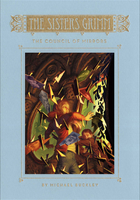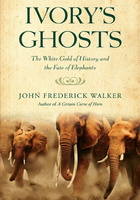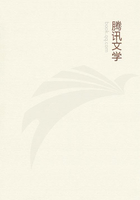Plato's Cave The use of analogy and allegory
In June 1998, the US Department of Justice filed a lawsuit against the Microsoft Corporation, arguing that its decision to include an internet browser in the new Windows 98 PC operating system was in breach of laws banning anti-competitive practices. In the Wall Street Journal on 10 November 1997, the CEO of Microsoft, Bill Gates, used a widely reported analogy to explain why his company should not be forced to remove the feature: 'I doubt the New York Times would let a newsstand tear out the business section of the paper just because it wanted to sell more Wall Street Journals. Or that the Ford Motor Company would let its dealers replace a Ford engine with a Toyota engine.'
The question is whether Mr Gates was making a fair comparison. In the opinion of the Department of Justice, he was not. The measures he imagined are not applied to newspapers and automobiles because no one company has a virtual monopoly in those industries. To tear pages out of the Wall Street Journal would hamper its ability to compete with rivals. The entire point of the anti-trust suit brought against Gates's company, on the other hand, was that the free bundling of a browser with its software prevented other browser makers from competing with Microsoft. The analogy does not stand up to a closer examination of the facts, even though it sounds at first hearing to be a fair point. Sometimes it is easy to be seduced by an elegant simile that compares one thing to another erroneously. The fact that something sounds apposite does not, of course, make it true. For this reason the Western philosophical tradition – not to mention the legal system – has emphasized the importance of logical arguments over analogies, relegating the latter to a chiefly illustrative role. The idea is that if something can be adequately demonstrated using logic and the facts at hand, there would be no need for analogies.
When literal explanations fail to convince, philosophers resort to analogies, allegories and metaphors. Sometimes this is because an apposite simile can get a point across more quickly and easily. If, for this purpose, a picture is worth a thousand words, then an analogy can be worth as many arguments. For example, the notion that our thoughts and emotions can be explained with reference to the workings of our brains is one of the most cogently argued yet intuitively unconvincing theories of philosophy today. No matter how strong the case that consciousness is a product of the brain instead of, say, an immaterial soul, it is still puzzling how intangible thoughts and emotions can be formed by the decidedly material contents of the skull. This may be because we are using the wrong image rather than the wrong idea. If we think of the brain churning out thoughts like a machine manufacturing widgets, we are bound to ask how its products can be so unlike the appliance that created them. Things become clearer if we imagine the brain to work rather like a special kind of machine: a computer. The American philosopher Hilary Putnam (1926-) has suggested that brains are the 'hardware' that run the 'software' of consciousness, just as PCs are the hardware that run computer programs. This analogy does not by itself prove anything – it remains to be shown whether or not brains really do function in this way – but it gives us a better understanding of how an otherwise unintelligible process might work.
At best, however, similes are more than just aids to understanding. The word analogy, or analogia, originally meant equality of ratios or proportion. When we use analogies to support a case, we take two things or processes which, though different, share a common structure, form or other characteristics. Having linked them together in this way, we then take a further quality possessed by the first thing and infer that the second thing also possesses it by virtue of what other features the two things share. For example, the English philosopher and Anglican priest William Paley (1743-1805) attempted to prove God's existence by drawing attention to the beauty and order exhibited in the natural world. So intricate is nature, he maintained, that it evinces the hand of a designer. At the core of Paley's argument was his famous watch analogy. If you were to come across a watch lying on a beach, you would not take it for a strange kind of pebble that had been washed up – for nothing of the kind could have formed by chance. You would infer that it had certainly been created by a watchmaker. Since the processes of nature display an equal complexity and precision, they too imply an artificer. Such inferences will never be infallible, as they involve speculating about matters we have not directly witnessed. Assuming that we can accept this, we may at least allow analogies to point us in the direction of where to look for our answers. Paley's analogy was a compelling one and demanded a serious response from his opponents. Admittedly, one could open a watch's casing and look for the inscription 'Made in Switzerland', whereas the trademark of heaven is not so readily discernible in the natural world. Nevertheless, the order manifest in the latter is as striking as that of any mechanical construct and is just as unlikely to have arisen through pure happenstance. Because of this equivalence, an explanation of the apparent 'design' in nature is required, whether or not one looks to God for it. In the event, Charles Darwin (1809-82) was later able to show that the complexity of the earth's species could have arisen without the conscious intervention of a deity – through evolution by natural selection. Richard Dawkins (1941-), the evolutionary biologist and subject of a later chapter in this book, titled a book on this process The Blind Watchmaker.
If natural selection had been discovered before watches were invented, then we might have concluded that the timepiece found on the beach had evolved in the same way as animals and plants. We could imagine a sceptic denying the existence of craftsmen skilled enough to produce it. 'Since a conscious intelligence was not involved in the creation of men and beasts,' he or she would say, 'neither should we imagine one to have fashioned this strange metallic object.' What this shows is that the conclusions we draw from analogies must be treated as provisional. They should be regarded as the starting point for further investigation rather than as the end of it.
In philosophy, the use of analogies to prove a point on the one hand and to merely elucidate one on the other has often been blurred. Plato's dialogues are among the most readable works of philosophy in the canon, and this is partly because they are so rich in similes and metaphors. Born in 428 BC, Plato was the youngest son in a rich and famous Athenian family. His real name was said to be Aristocles – 'Plato', or 'Platon', being a nickname derived from the breadth of either his shoulders or his forehead. As a youth, he received the standard education enjoyed by young aristocrats and become a champion wrestler as well as a skilled musician and poet. Well suited to the physical life, he served in the Athenian military between 409 BC and 404 BC at the close of the Peloponnesian war with Sparta. After the war he joined the cause of the Thirty Tyrants, the oligarchy established in Athens in 404 BC. Though one of its leaders was his uncle Charmides, the violence committed by this group soon prompted Plato to leave. By the time democracy was restored a year later, Plato had given up his political ambitions. This decision was confirmed by the execution of his teacher Socrates in 399 BC, after which Plato travelled in Egypt, Italy and Sicily. This was followed by another stint in the army, during which he was reputed to have been decorated for bravery in battle. Concluding that his political influence would come from instruction rather than example, in 387 BC he founded the Academy, a school of learning devoted to science and philosophy, that convened in the grove of Academos. The school was intended to be a breeding ground for future statesmen who, Plato hoped, would do a better job than their predecessors. Though its founder died at the age of eighty, the Academy lasted for almost nine centuries until it was condemned as a pagan establishment and closed down by the Christian emperor Justinian. Plato did have one opportunity for a more direct influence upon his times. When the ruler of Syracuse, Dionysius I, died, Plato accepted, somewhat against his better judgement, the offer of the former ruler's brother-in-law, Dion, to tutor Dionysius II. The plan fell apart when the new ruler exiled Dion from Syracuse. Plato was imprisoned and subsequently sold into slavery, from which he had to be ransomed by a friend.
After his first meeting with the great Socrates in 408 BC, when he was twenty, Plato publicly burned the verses he had written and vowed to pursue a life of philosophy. To prove his dedication, he once claimed that he had chosen to live in a street occupied by goldsmiths so that when sleepiness began to overcome his thoughts he would be awoken by the noise of their tools. He soon became Socrates' most able pupil, taking up the ideas of his teacher and elaborating upon them at length in his dialogues. Plato does not himself feature in these dialogues, and since Socrates is always their protagonist it is sometimes difficult to discern whether the views expressed in them belong to the master or the pupil. There is some evidence that Socrates was bemused by how Plato represented him, and he once had a dream in which his protégé turned into a crow before jumping on to his head and pecking at his bald spot. The view of the consensus is that the theory of Forms that underpins many of the arguments in Plato's dialogues belongs chiefly to Plato rather than Socrates. This theory, according to which the physical world of images and impressions is a pale imitation of a higher world of knowledge and truth, draws on the principle of analogy. Under its terms we cannot know things such as trees and animals, since the world of appearances they populate is not worthy of knowledge proper. In Plato's view, we can only truly know that which is truly real, and this criterion is met solely by perfect and unchanging objects. Somewhere, he held, there resides an ideal tree that makes the grade, and it is from this one that ordinary trees derive their form. It is also the object which our everyday talk of trees hints at. When it comes to the ordinary oaks and sycamores of parks and woodlands, we have a relation to them which is inferior but analogous to knowledge – that is, we merely perceive them. We can, however – with the right philosophical training – acquire knowledge of the counterparts of trees and animals that reside in the world of eternal truth. Whereas perceptions can be blurred or mistaken, any knowledge of this higher realm would be perfect and never subject to revision.
Plato describes our relationship to the world of truth using one of the most famous analogies in Western philosophy: the simile of the cave. In his masterpiece The Republic, Plato asks us to imagine that there are men imprisoned in a cave who have never seen the outside world. They are held in chains with their backs to the entrance and cannot move even their heads to turn and see each other or the daylight behind. A fire is kept burning outside the low opening to the cave and people who pass before this fire cast shadows of themselves and their burdens on to the wall before the prisoners. If one of the passers-by should speak, then the sound would echo off that wall and the prisoners would naturally assume that the words they heard were uttered by the shadows. As they have been in this predicament from birth, the prisoners deem reality to be nothing more than this display of flickering shadows. Now, if one of these men was suddenly released from his fetters and made to turn around and face the light, his eyes would be dazzled and hurt by the fire and the daylight. Since he is unaccustomed to light, he would not be able to see those walking past the cave's entrance clearly and would not immediately believe that he was looking at a world more 'real' than the one he had grown up in. He would need first to look at dimmer things such as stars in the night sky and reflections in water before progressing to behold objects in full daylight. Eventually, he would be able to look at the sun itself and realize that it is this that determines the seasons and makes his perceptions possible. Plato's cave is often compared today to a movie theatre from which we emerge blinking and unsteady after a matinee.
It is paradoxical that while Plato wishes to dismiss ordinary beliefs about everyday objects as merely analogous to knowledge of ideal ones, the parable of the cave in which he makes this point most vividly is itself an analogy. This may seem self-contradictory, but we need to remember that the value of a good simile lies not in how it can prove a case so much as in the way it can point us in the general direction of the truth. By using the method of allegory, Plato's cave helps to lead us from well-trodden ground into the unfamiliar territory where, he hopes, the analogy will no longer be needed. The story also explains why Plato's ideas, presented as those of Socrates, might not immediately convince his listeners, for if the former prisoner should return to the cave and inform those still captive of the world outside they would deride him as a crank. Many thinkers in the real world who attempted to see the truth behind appearances have met with a similar response. When Galileo directed his telescope upon Jupiter, he discovered the planet's moons and found that one celestial body can orbit another even though it is not the centre of the universe. He reasoned by analogy that the earth itself could lie in a similar arrangement. Widely dismissed as ridiculous at the time, his reasoning none the less helped lead to the modern understanding of the solar system.
The sun is of crucial importance in Plato's story. Plato denied that knowledge was equivalent to perception, for perception was unreliable whereas true knowledge should be infallible. However, his analogy of the soul with the eye shows that he thought that knowledge works by a similar mechanism to perception. For Plato, apprehension is of something by something via something. There must be an apprehender, something that is apprehended, and finally a medium through which the apprehension takes place. Just as the sun is the cause of our perceptions through the light it emits, there is something that is the cause of knowledge through a kind of intellectual light that operates on the soul. Plato called this thing the idea of the 'Good', which is the source of truth and reason in men and women. It was the task of philosophy to teach us to use reason – our intellectual 'eye' – properly, directing it upon things that at first may be difficult or even painful to regard. The cave and the sun work both as allegories and arguments for Plato. Firstly, they tell us a story of how we come to be blind to the truth and how we might come to see the light. Secondly, if we accept that the ability to understand is a faculty like the ability to see or hear, then it will require a medium just as sight requires light as a medium. When this factor is absent – and the light of reason is eschewed in favour of faith or fancy – then we will be truly in the dark as far as knowledge is concerned.
This makes Plato's view sound rather sober, but at the same time he believed that the idea of the 'Good' – the object that emitted intellectual light' – was as real as the sun (more real, in fact, since it was located in the eternal and unchanging realm of ideas). Most adults would require more evidence than a mere analogy before they started to believe in such an occult entity. Knowledge resembles perception – or sight, at least – in many ways, but it does not seem to require an other-worldly power source for its operation. Neither, for that matter, do all the senses require a medium. Sight requires a light source, while hearing depends upon air to carry sounds, but there does not seem to be an equivalent in the case of touch, for example, where all that is needed are hands and objects. Moreover, the sun is not the only source of light. Since lamps, torches and candles can all provide the illumination that enables us to see, the 'light' of understanding itself might have more than one source rather than the 'Good' alone. Just as the discovery of conflicting facts can sink a theory, conflicting images like these can put paid to an analogy. While Plato's simile impels us to investigate the 'Good' further, equally powerful disanalogies tell us not to bother.
The light of the sun and the 'light' of reason make for a pleasing comparison, and it is not surprising that Plato was seduced. Arguments from analogy seek to show that two things similar in one way must be similar in another way also. When we say this, we think that the traits we have already found to be similar are the essential ones – the ones that determine whether or not an object will have those extra characteristics that are the subject of the investigation. What we human beings deem essential, however, nature may have other ideas about, and this is often why arguments from analogy fail. For example, while nature may allow one kind of berry to be nutritious, this does not bar her from creating other varieties that are poisonous though they look similar. Toxicity may be a very important issue for us, but it seems to be less so for plants, which do not take care to look succulent only when they are edible to humans. Appearances do serve as a useful guide for foragers, as by close inspection – accompanied by a little knowledge – one can usually tell a blackberry bush from deadly nightshade. Yet even experts are sometimes mistaken, and it would be foolhardy to expect every small, black and shiny fruit to taste delicious.
As we have seen, analogies work to suggest lines of future investigation into facts concerning the natural world rather than to demonstrate such truths themselves. Sometimes, however, they function as more than signposts to truth. This happens when we have already decided what the truth is but are unaware of its ramifications, as often happens in the realm of morality. The notion of animal rights, for example, is founded on the analogies that can be drawn between human beings and other living creatures. A chimpanzee has the cognitive abilities of a human infant. Therefore, animal rights activists argue, a chimpanzee should have the same rights as we confer on children and, by extension, the same rights to life as adults enjoy. In this case, we have decided what an individual must possess in order to demand rights. If it is the ability to demonstrate consciousness of some sort and a sensitivity to pain, then at least the 'higher' animals qualify as well as people. Admittedly, the mental faculties of an ape or dolphin are limited and do not develop beyond those of a human child, but neither do those of severely handicapped adults and we do not relegate their status to that of animals. On the contrary, many societies today arguably take greater care to protect the rights of the disabled than those of citizens who can fend for themselves. We therefore employ double standards when we deny rights to animals.
Analogies are very effective at exposing such irregularities on our part. The physical world operates according to its own laws, but when it comes to ethics it is we who are in charge. If we say that cognitive abilities confer the right to life then that is a decision we have taken, not a fact that we may or may not have discovered. Arguments from analogy in the moral realm consequently call upon us to be fair and consistent in our decision-making. Nature, on the other hand, while certainly unfair, is beyond our control and cannot be expected to be consistent.















